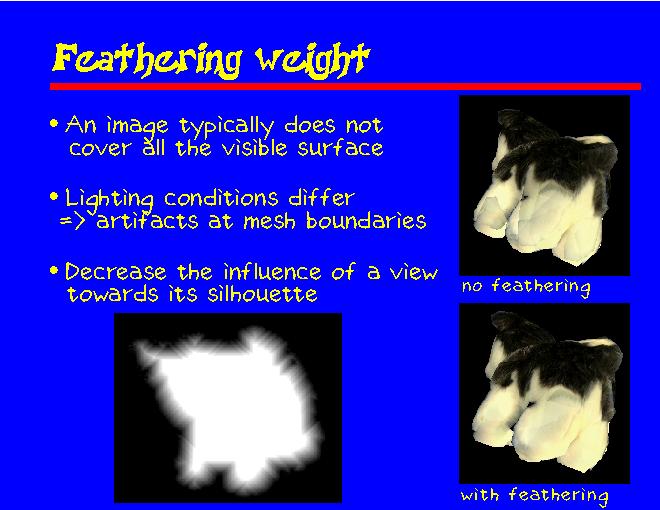Click slide for next, or goto previous, first, last slides or back to thumbnail layout.

Click slide for next, or goto previous, or back to thumbnail layout.
Click slide for next, or goto previous, first, last slides or back to thumbnail layout.

Click slide for next, or goto previous, or back to thumbnail layout.
The third and final weight is called the feathering weight.
We paint each new image by using pixels from three input images. None of those images are likely to cover all the surface that is visible from the current viewpoint, unless the viewpoint coincides with that of a stored image. So some new pixels are blended using only two or even one ray, while the neighboring pixels may be a blend of three rays. If, as it often happens, the images are not taken with exactly the same lighting conditions, this may lead to artifacts, as in the paws of the dog on top right.
The feathering weigth combats this by reducing the influence of an input image towards the silhouette of the object, as shown in left. Now instead of a sharp change where one view ceases to influence the pixel color, this change is much more gradual, and the artifacts disappear or at least become less noticeable.